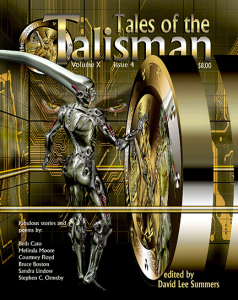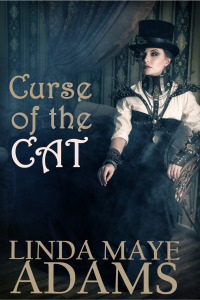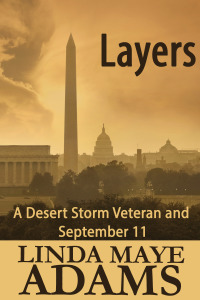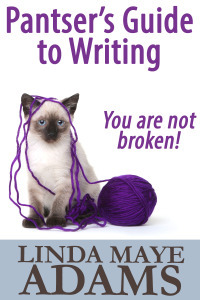Linda Maye Adams's Blog, page 95
August 10, 2015
Time for a Little Artillery
This photo is courtesy of the Navy and I was delighted to find such an awesome photo.

PACIFIC OCEAN (July 4, 2015) Gunner’s Mate 2nd Class Tyreonda Gray fires a ceremonial cannon from the flight deck of the aircraft carrier USS Ronald Reagan (CVN 76) in honor of Independence Day. Ronald Reagan is underway off the coast of Southern California. (U.S. Navy photo by Mass Communication Specialist 3rd Class Jonathan Nelson/Released)
My comments: When I was thinking of enlisting in the military, I checked out the Army first, and then the Navy. The Navy recruiter told me a lot of people enlisted there because of the uniforms. They sure do have spiffy uniforms, especially when compared to the ones the Army had during my time.
But I’d never have survived having a white uniform. Food would take aim at me, and it would always be the kind that stained.
Filed under: Military Tagged: Military Women, Navy Women, U.S. Navy








August 3, 2015
Women at Sea
3This time, we’ve got a photo from the Coast Guard. Everyone usually kind of forgets the Coast Guard when they talk about the military. The silhouetted soldier is a very iconic image, but this is the first time I’ve seen an image like this that uses a woman.

Officer Candidates training.
My comments: Little known fact about me. Before I enlisted in the Army, I was into Voyage to the Bottom of the Sea fandom. I had really had burned myself out badly trying to write for Hollywood (unsuccessfully), and fan fiction became a way to get back into writing. I edited the zine The Seaview Sextant.
Filed under: Military, Photos Tagged: Coast Guard Women








August 2, 2015
Writing Process is not the Same Thing as Writing Craft
When I was trying to figure out what was wrong with my writing, I took a lot of writing workshops. There are several places you can go and find a ton of courses on every imaginable writing subject.
I tried screening them where I could. You know, checking to see if the writer had more than one book out, and later, if the writer was an outliner or a pantser, a person who doesn’t outline.
There was one workshop that had three levels:
The cheapest: you got the printed material.
Participate online with other writers taking it.
Critique from the author offering the course. This was pretty expensive.
The writer only had two books out, so she wasn’t that experienced, though her course was getting raves from other writers. Even opinions from other writers is not always a good recommendation, because sometimes they think “Published” makes the person an automatic expert. A person with only a few books out is still new at craft.
I was curious enough to pay for the first option, and it was “Meh.” Very superficial. It also did what all of these other courses did:
Taught writing process as craft.
They’re not the same thing.
Craft is like learning what a story is (which is not easy to do), or characterization, or pacing.
Process is how you get there, or your approach to building the story. It’s how much you know about the story, or don’t know about the story. It’s the order you build it, and how you build it, like writing thin and filling it in or writing too much and cutting it.
But a lot of writers mistake process for craft.
That’s where pantsing a book or outlining one comes in. How often have you seen a blog post or a craft book say that pantsers don’t have plot because they don’t outline?
One of the things that struck me was a writing coach who was selling a outlining process. He pounded his fist and said quite loudly over and over that pantsers books were always a mess and they never worked. Evidently, it never occurred to him that it might be a problem with the writer not getting what a story is.
This is one the reasons it’s really important to find other pantsers because the outliner writers will always blame the process.
Filed under: Writing Tagged: Pantser, Writing Process








July 31, 2015
Publications for July
My short story The Stones Next Door is out in Tales of Talisman.
This story was inspired by a rather odd historical site in my area, a graveyard . The graveyard’s always been there, and is sealed off with a heavy duty iron fence. The stones are probably limestone, and they’re eroded, broken, and falling over.
Developers built a house behind it. Because of the way this is all laid out, the graveyard is what you see, not the house. Can you imagine giving directions to your house — just look for the graveyard?
Also out for July:

Edward Wight still has dreams from a war twenty years past, but his new nightmare is a cursed painting. Everyone who comes in contact with this artist’s work dies. Edward’s only chance at a different fate lies with Maz, a widow who specializes in newfangled inventions, but she must act fast—he’s running out of time.
Layers: A Desert Storm Veteran and September 11
On September 11, 2001, the world changed forever when four planes crashed, including one that struck the Pentagon in Washington, DC.
Linda Maye Adams describes the events of the day in Washington DC from a Desert Storm veteran’s perspective. This story moves chronologically through what happened and how it impacted the people who lived in that area, capturing the emotion of an unforgettable day.
Filed under: Books, Entertainment, Writing Tagged: 911, Dark Fantasy, fantasy, Non-Fiction, September 11, Short Stories, Steampunk, Stones Next Door








July 27, 2015
The Legacy of War
I think the first time I saw a woman prisoner of war was in a movie about the Bataan Death March and the women nurses taken prisoner by the Japanese called Women of Valor. That aired three years before I enlisted.
Also the year Jessica Lynch was born, probably one of the most famous women prisoners of war (please no commentary on the political side). It’s now been twelve years since she was rescued. She has an interview on CNN, one of those “Where are they now?”
The most amazing thing was that people keep expecting her to have gotten over it now, like it wasn’t a big deal when it happened. It shows the divide where people who have never experienced war really don’t get how profound it is, and how life changing it is.
—
After she was rescued, one of the networks rushed out a telefilm called “Saving Jessica Lynch.” I watched it and probably shouldn’t have. It was an awful film. Poorly written, poorly directed, poorly acted.
But there was one scene in it that stopped me cold. This supply company was on a convoy going across the desert. The convoy commander was lost, so in typical Army mentality, he was still thinking “Accomplish the mission.” He kept the convoy going in the same direction and drove right into the ambush.
I had to turn off the movie and walk away from it. I was very close to having a meltdown, because the realization hit me that it could have easily happened in my company. It’s such an Army thing to do.
The movie aired in 2003. Desert Storm ended in 1991. That’s twelve years.
War’s not something you really get over; it’s something that’s always with you.
Filed under: History, Military, News Tagged: CNN, Desert Storm, Jessica Lynch, Saving Jessica Lynch, Women of Valor








July 21, 2015
Veteran Wins Espy Award
Danielle Green, a woman Iraq War veteran, received an Espy Award (Excellence in Sports Performance Yearly Award. She played for Notre Dame, then enlisted in the military, was wounded, and then got a Masters Degree.
—
The Army was always trying to get the soldiers to get better educated. They wanted the soldiers to go to college classes. Fort Lewis even offered an education program where if you re-enlisted, you could go to school full time for a year on the Army’s dime. But there was a time limit on it–the soldier had to do it the first year after the re-enlistment.
That resulted, curiously, in the only time I’ve ever seen a soldier claim the Army broke their contract–and won the battle. The soldier had re-enlisted for the college, and then his platoon sergeant kept putting him on missions so he couldn’t go to school during that first year. The soldier complained, and at the end of the year, asked to be discharged because the Army had broken the contract–and they did!
For me, I didn’t use any of the Army’s college offerings. I’d gone to college before I enlisted, but I had trouble making up my mind about what I wanted to do. I wanted to write full time, even then, but I was told by a lot of people that writers never make any money. So I wandered from major to major–accounting, broadcasting, journalism, theater–trying to figure out what I wanted.
All Fort Lewis offered was college for people who hadn’t taken it before. I could have done more wandering, so I didn’t take any more. The only thing I regret is signing up for the GI bill anyway. It’s hard because you have to make the decision right away, and it may be the wrong decision. Part of the GI Bill is paid from your paycheck, and part of it is by the Army–but it also expires. So I got it and never used it.
Even today, I wouldn’t go back to college. Not the right thing for me.
Filed under: Military, Thoughts Tagged: Army, Espy awards, GI Bill, Women Veterans








July 20, 2015
Oldest US Veteran
SHE is 110 years old.
Emma Didlake signed up for the Women’s Army Auxiliary Corps during World War II.
The Army History site has some of the background of the WAAC up. It’s interesting that the Congressmen fussed over women enlisting because:
“Who will then do the cooking, the washing, the mending, the humble homey tasks to which every woman has devoted herself; who will nurture the children?”
A lot of the male soldiers didn’t like it because it represented change. Women were in places they hadn’t been before, and it changed some of the gender roles by its existence. The WAACs paved the road for people like me to enlist decades later.
Filed under: Military, Thoughts Tagged: WAAC, Women Veterans








July 18, 2015
Why outliners can’t tell pantsers how to write
I’ve gotten a lot pickier in buying writing craft books in the last two years. Now, when I buy one, I look through the table of contents, and even some of the pages. If the writer promises he or she will teach techniques for both outlining and pantsing (writing without an outline), it’s an automatic rejection.
I found that a lot of them don’t have any clue as to how pantsers write.
This post was inspired by a different topic entirely, omniscient viewpoint. Several weeks back, a writer posted a blog on omni, and it was clear that she didn’t understand the viewpoint—but spent time explaining how to do it, incorrectly.
There are a lot of posts like that. The writer sees omni, tries to understand by framing it from their knowledge of third person. Third person is from the character’s viewpoint, so therefore, omni head hops, or is multiple viewpoints.
But omni is ONE viewpoint, that of all seeing narrator. Think storyteller or film director, who is controlling what the reader knows and doesn’t know.
That’s the same problem with pantsing a book.
Outlining starts out with figuring out the parts of the book—the major events in the story, how it ends, who did it, and whatever. Some are incredibly in-depth, while others are much less so, but they do contain some element of defining the road map for the story.
Pantsing is the discovery of what happens in the book as we write. Some writers may figure out what the ending is or do a character background, or anything in between. Some, like me, may not know what’s going to happen in the next scene until they get there.
That’s a pretty big difference!
Outliners look at how we write from the perspective of outlining, scratch their heads, and then apply what they know to it. Like omniscient viewpoint, they draw the wrong conclusion because of how they’re framing their approach to understanding pantsing and conclude that techniques like plot points and three act structure would really make sense for us to use.
I had to start thinking a lot about that because I went through a lot of those writing workshops that were going for $20-$30. If I started asking questions framed from the pantser perspective, the instructor didn’t know what to do with it. She’d start tap dancing—talk around it with lots of words, trying to sound authoritative, and never actually answer the question.
Yet, when I’ve run into pantsers who knew what they were doing, the answers were pretty straightforward—and better still, didn’t leave me scratching me head, wondering how I was going to apply it.
The problem is that pantser writer has to be on guard for this kind of stuff because everyone assumes you’re outlining when you’re not. In looking at all that I’ve seen over the years, I’m amazed at how little is out there for the way we write.
Coming in August, just in time for Nano:
Filed under: Thoughts Tagged: Pantser








July 13, 2015
Being a Woman and Being in the Military
Last week, Susan Ahn Cuddy passed away. She was the first American woman of Asian heritage to enlist in the military. It was posted on one of the women veterans’ Facebook pages, so I thought it would share it out here.
This is what she ended up doing:
“She instructed pilots in air combat tactics before becoming a gunnery officer, and subsequently a lieutenant. Eventually she became the naval liaison from Naval Intelligence to the Library of Congress.”
Being a woman in the military can be hard enough; at that time, it had to be really difficult for her, since it was in 1942. My grandfather was a minister in San Francisco following World War II, and had a church, so he hired the Japanese. No one else would give them work, and he and the family got a lot of hate. The Japanese community recognized him posthumously a few years ago.
So I’m sure she got bad reactions from the men for being a Korean and for being a woman.
One of the things I noticed (in hindsight) was that I could tell if the men had been socialized with women. There were men who probably had sisters and the example of treating them as people. Then there were men who thought that the only purpose for women was to date and have children.
All the women could do was put up with the bad attitudes, or as we said in the transportation corps, “Suck it up and drive on.”
Little known fact: My great-great grandfather was James Edward Adams, one of the first missionaries to go to Korea. He wrote the book on missionaries, which is still available more than a century later.
Filed under: Military Tagged: James Edward Adams, Korea, Missionaries, Navy Women








July 11, 2015
What makes you stop reading an author?
We used to have a B. Dalton’s in a local mall—now a Starbucks. At least a couple of times a month I was in that store, checking the speculative fiction and mystery area for book series by my favorite authors. Was there anything new?
It was like finding buried treasure when I discovered a new book was out!
Then I would race back and read it in one sitting, and then reread it because it was so good.
But over time, I’d discover that maybe about book 7 or so, something changed. With some books, they felt worn out and tired, like the author was bored with the series. I’d usually buy another book, but here was where I would stop buying hardbacks. At $27.00 a pop, that’s pretty expensive if the book isn’t a satisfying read. After paperbacks went to $7, they started getting too expensive, too.
In the mystery genre also, I started seeing some of the long term series mix first and third. The stories had started out in first, and I liked the voice, so third seemed disruptive. It felt like the author thought they had chosen the wrong POV for the series originally and had now painted themselves into a corner. I think I would have been less bothered by that if it had been in book one, not suddenly introduced 10 books in.
Then there were the books where the author made a very sudden change: A character getting married for no other reason than simply to do it; a character finding lost family after making such a big deal throughout the series that she didn’t have any; and a character who crossed a major line that was completely out of character.
And in some books, it was apparent the author stopped learning, or figured they knew everything about writing. It’s fun as a reading watching an author get better, and especially finding new things to like an enjoy, and disappointing when the author stagnates.
Somewhere in all that, I stopped buying those books because the buried treasure turned into a box of rocks.
I used to give the books a benefit of a doubt, and pick them up at the library. I just had two of those I got, and sad to say, the series is no longer the same.
What makes you stop reading an author?
Filed under: Books, Entertainment Tagged: Bookstore, ebooks, Novel series, reading













